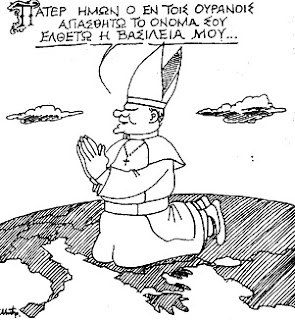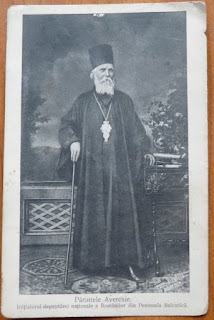~ Για ελληνικά:
Translation from Greek to English by Tsiamitros Ioannis, graduate of the Aristotle Univercity of Thessaloniki (Greece), Faculty of Philosophy, School of English language and literature.
It is well confirmed that there is a linguistic relationship between Greek and Ar(o)manian (Koutsovlahic*). Prominent Greek scientists have recently (last forty years) dealt with this issue [Nikos Katsanis, Antonis Bousboukis, Kostas Dinas (linguists) and Achilles Lazarou (balkanologist-romanist)] and came to such scientific conclusions. We hope that, after more attentive and proper research, additional secure conclusions will be in the future.
In this present note we will deal with the influence of Greek to Ar(o)manian regarding the numeral system. All information was taken a) by N. Katsanis’- K. Dinas’ book, entitled 'Γραμματική της Κοινής Kουτσοβλαχικής’ (Grammar of Common Ar(o)manian), edited by ‘The Archives of Ar(o)manian Studies’, Thessaloniki 1990 and b) by Achilles Lazarou's book, titled ‘Βαλκάνια και Bλάχοι’ (Balkans and Ar(o)manians), edited by ‘Φιλολογικός Σύλλογος Παρνασσός’ (Parnassos Philological Association), Αthens 1993.
In the above mentioned first book, N. Katsanis and K. Dinas tell us (pp. 67-68, notes 1-3) the following, word for word (verbatim):
Note 1. “…Numbers (numeral system) of Ar(o)manian differ with the corresponding ones of Dako Romanian considerably. Greek cardinal numbers are often used in Ar(o)manian after no 10, while the use of Greek ordinal numbers is even wider’’.
Note 2. “Numbering from no 1 to no 19 in Ar(o)manian is not Latin-like, although the elements, that are used, are Latin. We find similar numbering in Albanian, Slavic and ancient Greek, where no 11 and no 12 are treated as ἓνδεκα (eleven), δώδεκα (twelve) [δέκα (ten), εἷς, (one), δύο (two)]. From no 13 onwards, the identification of ancient Greek and Ar(o)manian is absolute: Anc. Greek: three and ten (τρεις και δέκα) = Ar(o)m.: trei sprădzatsi, Anc. Greek: four and ten (τέταρες και δέκα) Ar(o)m.: patru sprădzatsi, Anc. Greek: five and ten (πέντε και δέκα), seven and ten (επτά και δέκα) etc’’.
Note 3. “Ar(o)manian, as far as no 20 concerned, is different from Dako Romanian, which ignores Latin VIGINTI and uses doauazece (DUO DECEM). Ar(o)manian from no 21 to no 29 follows numbering similar to ancient Greek. So, no 21 in ancient Greek is: εἷς και εἴκοσιν, in Ar(o)manian is: unspraγingits (UNUM SUPRA VINGITI), while in Dako Romanian it is douazeci si unu (twenty and one)…”.
Let us now see the relevant extract of the above mentioned second book (‘Βαλκάνια και Βλάχοι’, by A. Lazarou) on pages 218-219.
"... The numeral system of Ar(o)manian, especially from number 20 onwards, is of great evidential (influence of ancient Greek to Ar(o)manian) importance as well. There is verified correspondence of the Ar(o)manian numeral system to the ancient Greek one, more accurately that one of popular (δημώδης) ancient Greek. It is considered the oldest type of system, as Schwyzer etc remark. Although the numerical terms (words) both in Ar(o)manian and Romanian are Latin, (the way of) numbering differs impressively. A small confrontation (of examples) makes the difference clear as following:
Latin
20 = viginti
21 = viginti unus, a, um (or unus, a, um et viginti)
22 = viginti duo, duae (or duo, duae, duo et viginti)
23 = viginti tres, tria (or tres, tria et viginti) etc.













